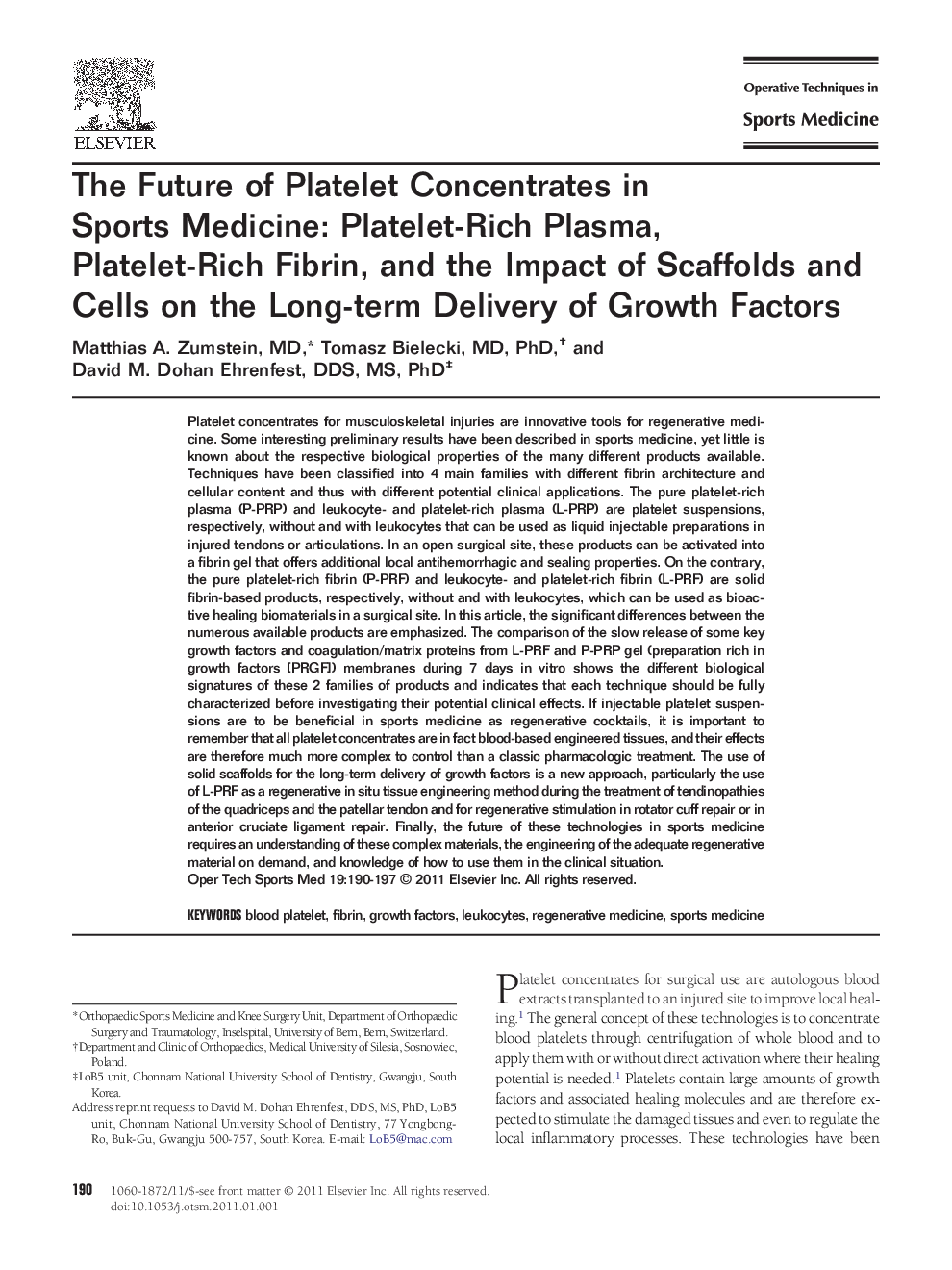| Article ID | Journal | Published Year | Pages | File Type |
|---|---|---|---|---|
| 4079789 | Operative Techniques in Sports Medicine | 2011 | 8 Pages |
Platelet concentrates for musculoskeletal injuries are innovative tools for regenerative medicine. Some interesting preliminary results have been described in sports medicine, yet little is known about the respective biological properties of the many different products available. Techniques have been classified into 4 main families with different fibrin architecture and cellular content and thus with different potential clinical applications. The pure platelet-rich plasma (P-PRP) and leukocyte- and platelet-rich plasma (L-PRP) are platelet suspensions, respectively, without and with leukocytes that can be used as liquid injectable preparations in injured tendons or articulations. In an open surgical site, these products can be activated into a fibrin gel that offers additional local antihemorrhagic and sealing properties. On the contrary, the pure platelet-rich fibrin (P-PRF) and leukocyte- and platelet-rich fibrin (L-PRF) are solid fibrin-based products, respectively, without and with leukocytes, which can be used as bioactive healing biomaterials in a surgical site. In this article, the significant differences between the numerous available products are emphasized. The comparison of the slow release of some key growth factors and coagulation/matrix proteins from L-PRF and P-PRP gel (preparation rich in growth factors [PRGF]) membranes during 7 days in vitro shows the different biological signatures of these 2 families of products and indicates that each technique should be fully characterized before investigating their potential clinical effects. If injectable platelet suspensions are to be beneficial in sports medicine as regenerative cocktails, it is important to remember that all platelet concentrates are in fact blood-based engineered tissues, and their effects are therefore much more complex to control than a classic pharmacologic treatment. The use of solid scaffolds for the long-term delivery of growth factors is a new approach, particularly the use of L-PRF as a regenerative in situ tissue engineering method during the treatment of tendinopathies of the quadriceps and the patellar tendon and for regenerative stimulation in rotator cuff repair or in anterior cruciate ligament repair. Finally, the future of these technologies in sports medicine requires an understanding of these complex materials, the engineering of the adequate regenerative material on demand, and knowledge of how to use them in the clinical situation.
